How North Korea’s missile programme advanced
North Korea's missile programme is a source of deep concern for the international community. The country's missile programme started with Soviet designed Scud missile, with its first batch reportedly coming via Egypt in 1976.
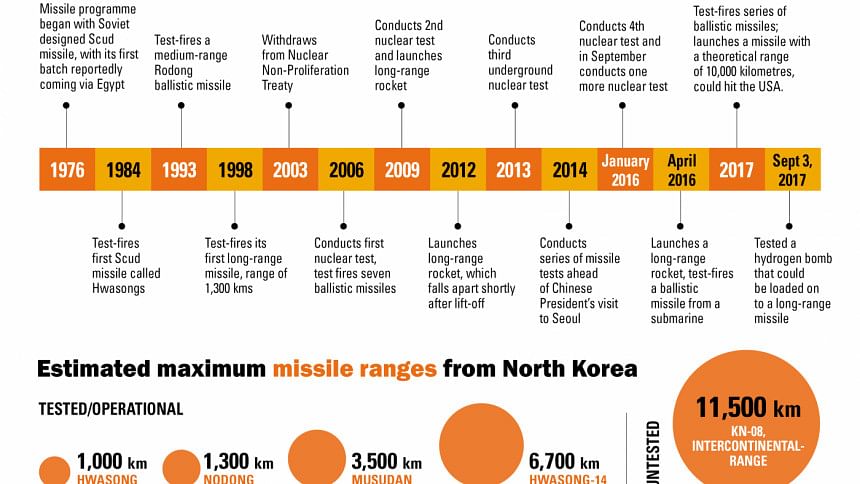
Tensions have been escalating in the Korean peninsula after North Korea claims to have tested a hydrogen bomb and an intercontinental ballistic missile that could go as far as to the east coast of the US. With the war of words between the US and North Korea escalating, focus has turned to North Korea’s missile programme.
North Korea has been working towards developing nuclear capabilities right after the World War II. While the intentions were there as early as in the 1950s, the country missile programme began with Scuds missile, with its first batch reportedly coming via Egypt in 1976. In next few years it built its own versions called Hwasongs. Under the regime of the first communist leader Kim II-Sung, North Korea conducted the first missile test in 1984.
After the death of Kim II-Sung, it was his son Kim Jong-il who ramped up both nuclear and ballistic missile programmes. When Kim Jong-il passed away, it was Kim Jong-un who took the reins of the nuclear programme and has been what many would term as unstoppable in the face of world condemnation and strict sanctions against his country.
In mid 1980s and 1990s, North Korea continued to work on building variations of Scud; Rodong 1 (1,300 km), Taepodong-1 (2,500km), Musudan-1 (3,000km), Taepodong-2 (6,700km)
After criticism for its nuclear programme was voiced, North Korea signed the Nuclear Non proliferation Treaty (NPT) in 1985. However it denied access to the inspectors of International Atomic Energy Agency (IAEA) in 1993 who wanted unfettered access to its waste storage sites.
Meanwhile it test fires a medium-range Rodong ballistic missile in the same year. The following year, it enters an agreement with the US and pledges to freeze its nuclear reactors in exchange of aid from the US.
In 1998, in violation of the treaty it test fires the first long range missile with a range of 1,300kms. Taking cognizance of the defiant act the Bush administration labels North Korea part of the “axis of evil”. North Korea withdraws from the NPT in 2003. In the October of the same year NK declares it has nuclear weapons.
In 2006, North Korea conducts first nuclear test, firing seven ballistic missiles. The UN Security Council passes a resolution demanding that the country put an immediate end to its nuclear programme.
Paying little attention to the council resolution the country claims to have successfully tested its first nuclear weapon. The consequences of the brazen declaration result in wide ranging sanctions on the country.
After the break down of the six-party talks in Beijing in December 2008, North Korea conducts its second nuclear test in 2009 launching a long range rocket. Following the test, UN Security council imposes more stringent sanctions.
In 2012 the US state department announces that North Korea had agreed to put a moratorium on its nuclear activity in exchange for food aid from the US. However in the same year, North Korea launches a long range rocket albeit it falls apart shortly after lift-off.
In February 2013, the country conducts third nuclear test, the first under Kim Jong-un. United Nations imposes more sanctions to register strong protest. In 2014, ahead of Chinese president’s visit to Seoul, North Korea conducts series of missile tests. Tensions escalate between North and South Korea resulting in firing of shells across the border.
In December, 2015 North Korea announces that it has added hydrogen bomb to its arsenal. In January 2016, the country conducts fourth nuclear test and in September of the same year, conducts one more test.
In April, 2016 North Korea test-fires a submarine launched ballistic missile. In the same year, for the first time it fires a ballistic missile into Japan’s maritime economic zone. In September, 2016 North Korea conducts its fifth nuclear test.
In July, 2017 North Korea test-fired a ballistic missile and declares it to be a ‘landmark’ test of Hwasong-14 ICBM. It test-fires a series of ballistic missiles with a theoretical range of 10,000 kms, that could go as far as to the US.
Last week North Korea claimed that it successfully tested a hydrogen bomb designed to be mounted on its newly developed intercontinental ballistic missile, producing a greater yield than any of its previous nuclear tests.
Copyright: DataLEADS/ ANN

 For all latest news, follow The Daily Star's Google News channel.
For all latest news, follow The Daily Star's Google News channel. 

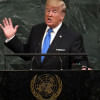
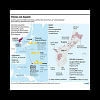
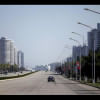
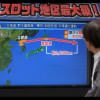
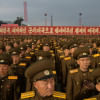


Comments